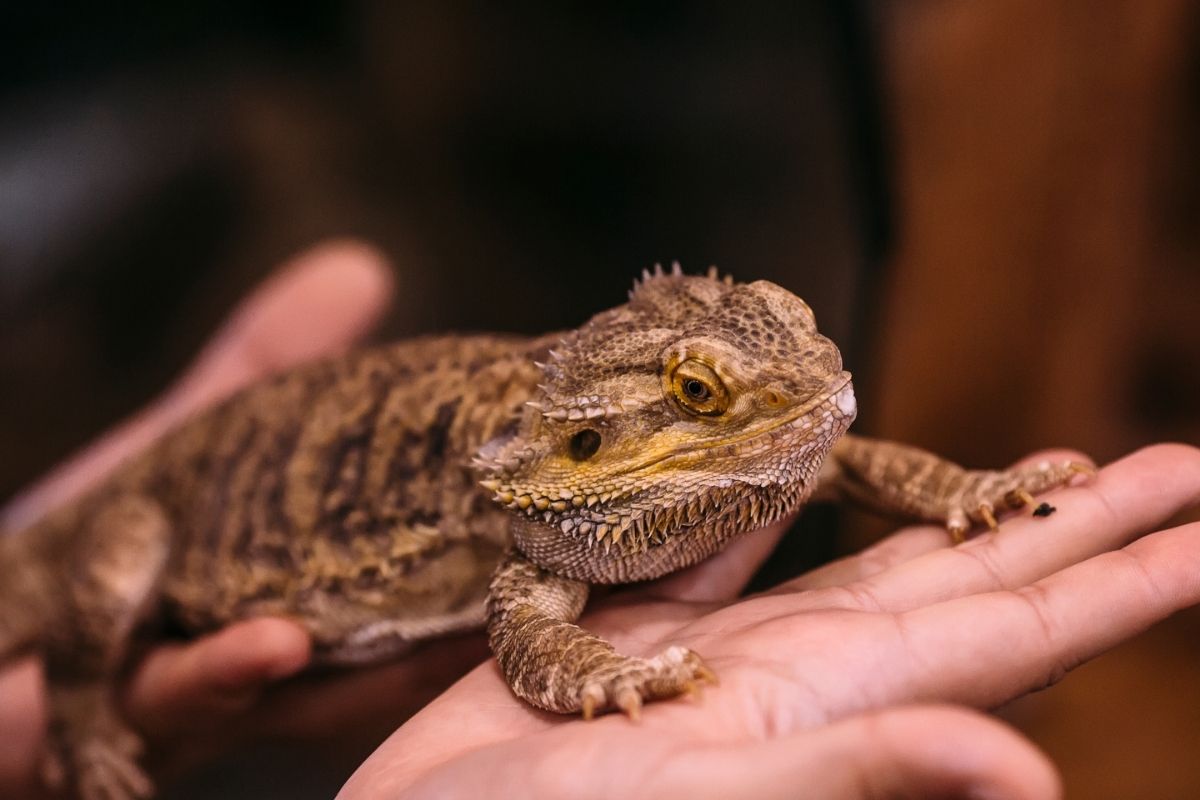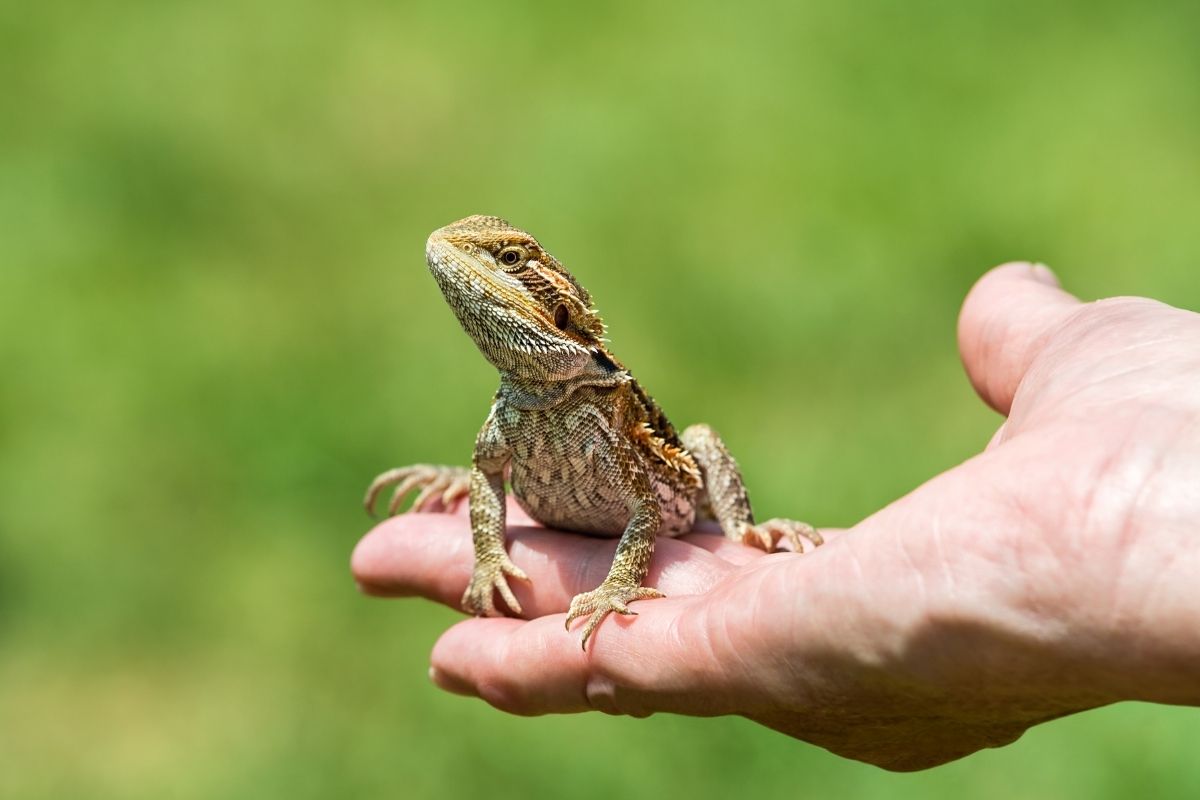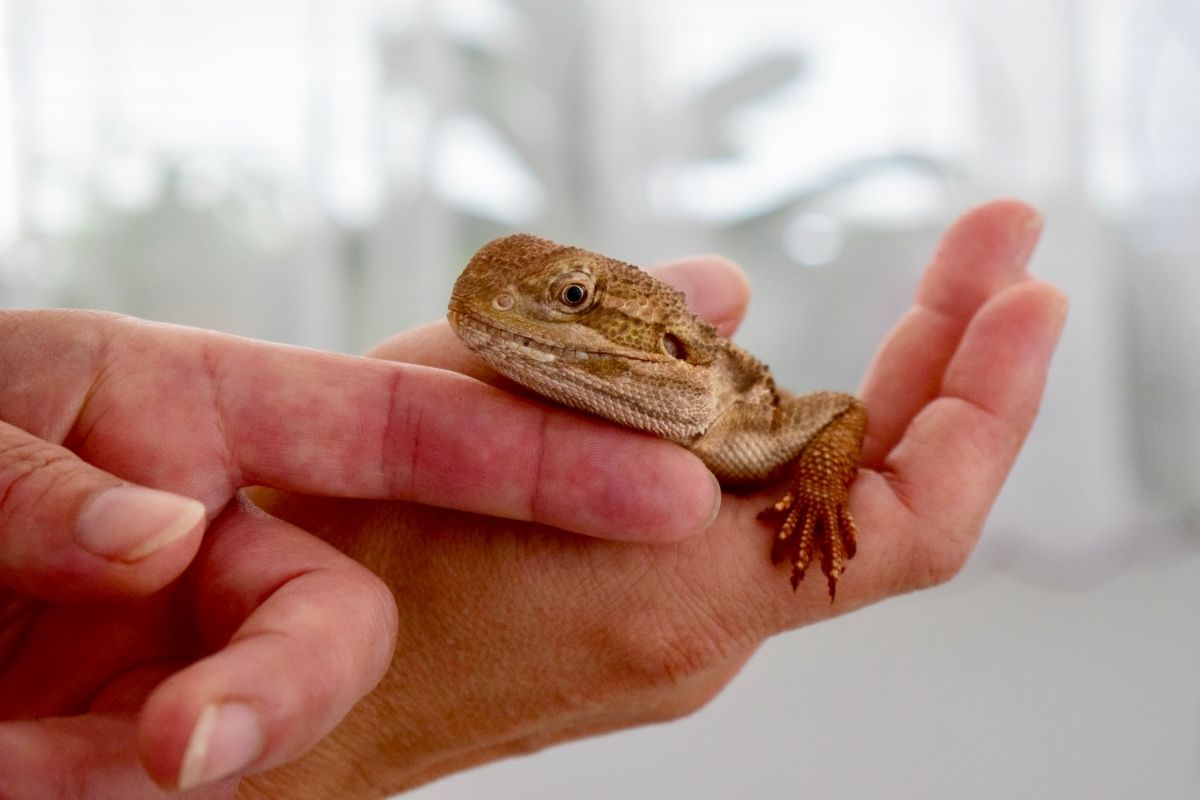Has your bearded dragon started licking everything, and you don’t know why?
Maybe this is your first time caring for a bearded dragon, and you want to know if their licking is normal or not.

Or maybe you are curious about the behavior of bearded dragons and want to know more. Whatever brought you here today, we have the answers you need!
It is no secret that bearded dragons like to lick things, but why they do this can be a bit of a mystery.
You can search endlessly for the answer but still come back empty-handed.
You start to worry if this behavior is normal, if there is something wrong with your bearded dragon, and if you should be concerned or not.
And that is where we come in! Today, we are here to tell you why bearded dragons lick everything and whether you need to worry or not.
So just keep on reading to find out more!
Why Do Bearded Dragons Lick Everything?
Bearded dragons lick everything, including flowers, the tank bottom, and even you! But why do they do this?
Well, there are a few different reasons why they lick everything.
Before we get into these reasons, it’s important to remember that it is normal for bearded dragons to lick everything!
Let’s take a look at why bearded dragons lick everything now!
Adjusting To A New Environment
Bearded dragons tend to lick everything when they are in a new environment.
They do this so they can adjust to where they are and also estimate the chance of meeting predators or threats.
This can also be an attempt to ensure their safety, which is more common in their natural habitat or if they share their enclosure.
It’s worth noting that you should not set your baby bearded dragons on sand or any other loose substrate, as they could swallow it while they are licking it.
Additionally, before releasing your bearded dragon, pick up any loose dust and tiny items from the floor.
Checking Temperature

Bearded dragons are often inquiring about the temperature of nearby items.
As a consequence, their licking behavior is often an attempt on their part to determine the temperature of an item.
Texture
Bearded dragons are often fascinated by the texture of an item.
That is why you will often see them licking away, judging the texture of the objects around them, such as their roughness or smoothness.
Tasting Smell
Bearded dragons are often seduced by an object’s texture.
That is why they are often seen licking at objects, analyzing their texture, such as their roughness or smoothness.
Each tongue flick transmits information to sensors located on the crowns of their mouths.
These sensors, in turn, aid bearded dragons in comprehending and appropriately reacting to their environment.
Rather than “tasting,” we may refer to beardies licking objects as a way of “testing” their environment.
What Do Bearded Dragons Like Licking Most?
While bearded dragons will lick practically everything in their path, a few examples stand out:
Objects In Their Habitat
This is where they spend most of their time and like becoming acquainted with the stuff included inside.
You
Yes, you and other family members/friends should spend as much time with your beardie as possible; your pet will surely start licking you and them!
Food
Each new food item, especially when provided for the first time, would pique your beardie’s attention, prompting it to continue licking it.
What Do Bearded Dragons Not Like Licking?

While the majority of bearded dragons lick things in their environment, a few, albeit minor, outliers exist.
This is not unusual, much less anything that requires remedial action, such as bringing your pet to the veterinarian or taking any other precautions.
As with humans, the majority of us share various characteristics, but a small percentage deviates from the norm and does not exhibit these characteristics; the same is true for bearded dragons.
Do Bearded Dragons Lick Things To Show Fear?
It’s critical to note at this point that bearded dragons do not flee in terror.
This is because a prevalent misconception exists, especially among new beardie owners, that they lick out of fear.
That is just untrue. As we’ve said multiple times throughout this article, it’s just a question of curiosity and awareness of their environment.
Final Thoughts
And there you have it, all the reasons why a bearded dragon licks everything!
It’s best to consider a bearded dragon licking everything as they experience their surroundings, just like humans do with touch.
This is how they understand the world around them and, of course, bond with you!
Frequently Asked Questions
Check out our FAQ section before you leave us today to fill any gaps in your knowledge!
What Is Jacobson’s Organ?
While the Jacobson’s or vomeronasal organ is largely responsible for sensory perception, it also performs other functions.
It does, however, assist bearded dragons in identifying pheromones generated by other bearded dragons.
Thus, Jacobson’s organ very certainly serves a critical role in ensuring that only eligible beardies “connect,” particularly during mating season.
As a consequence of this comparison, one may easily assume that Jacobson’s organ helps bearded dragon reproduction.
After all, the vomeronasal organ assures the continuation of the horrible “beardie tradition!” by assisting them in selecting a good spouse.
Do Bearded Dragons Like To Be Pet?
Bearded dragons, in general, prefer alone and remain unresponsive to affection poured upon them.
At the same time, they are not opposed to being touched; rather, some seem to like it!
Can Bearded Dragons Sense Emotion?
Reptiles in general, are emotionless; they do not seem to perceive or display themselves.
On the other hand, bearded dragons are an acceptable exception to this rule since they seem to sense and show some level of emotion.
Why Is My Bearded Dragon Licking The Air?
As previously stated, bearded dragons use their tongue to collect particles and gain information about their surroundings.
When a bearded ‘licks the air,’ it is attempting to hone its taste and scent.
As a consequence, if your bearded dragon pooped in the tank, it is quite probable that it will dislike the odor.
You may see your bearded dragon widening its lips and licking the ‘air’ in this instance to enhance its scent.
Then it may be clawing at the glass, screaming for release as a result of an allergic response to the odor.
Numerous bearded dragons genuinely like maintaining a clean tank.
Some may retain feces until they are expelled, especially if your dragon has a habit of pooping in the bath or anywhere outdoors.
Why Is My Bearded Dragon Sticking Its Tongue Out?
If your bearded dragon’s tongue is extended but not ‘licking the air,’ he or she may be hot.
If your bearded dragon exhibits this behavior when sunbathing or in the tank in general, the temperature may be too high.
Bearded dragons pant to expel surplus heat as the temperature rises.
If the temperature in the basking area does not exceed 110 degrees Fahrenheit, it is OK (43 Celsius).
An open mouth may potentially signal hostility – does your bearded dragon make any noises or puff its beard?
It may be fearful or suspicious of unfamiliar people, animals, or circumstances.
Why Is My Bearded Dragon Licking Its Lips?
At times, you may see a bearded dragon licking its lips. If your bearded dragon is licking its lips, it may be dehydrated.
Trickle water into the nose of your bearded dragon using a dropper or something similar.
Additionally, a reptile water fountain such as this one may be beneficial since bearded dragons like to drink flowing water unless they are thirsty.
Only a small number of bearded dragons drink from a water dish.
Ascertain that the temperature in the tank is not excessive.
One thermometer equipped with this kind of probe should be placed near a source of light, while the other should be placed in a chilly spot.
The temperature should not exceed 110 degrees Fahrenheit (43 degrees Celsius) directly under the light, while the cool side should be between 75 and 85 degrees Fahrenheit (23.8-29 Celsius).
